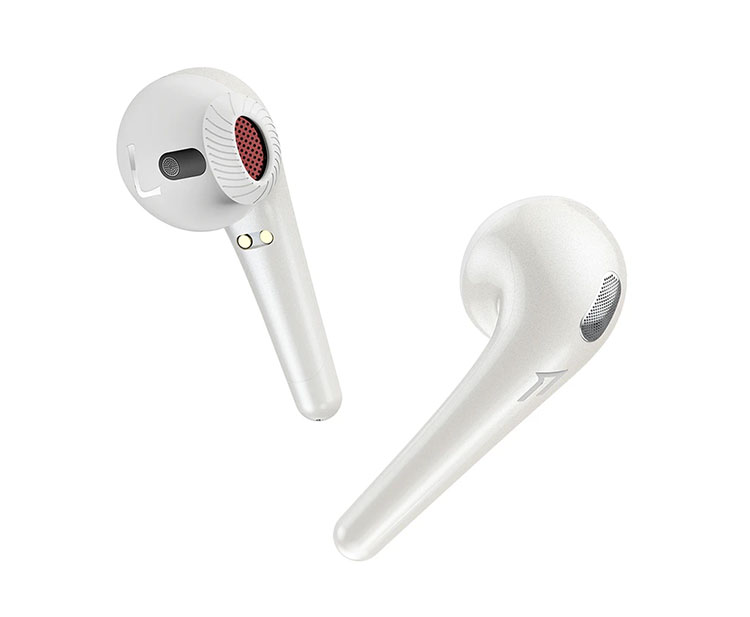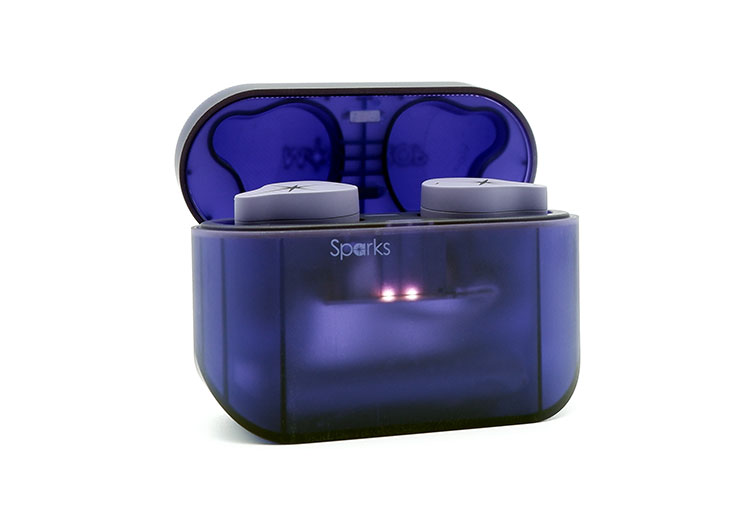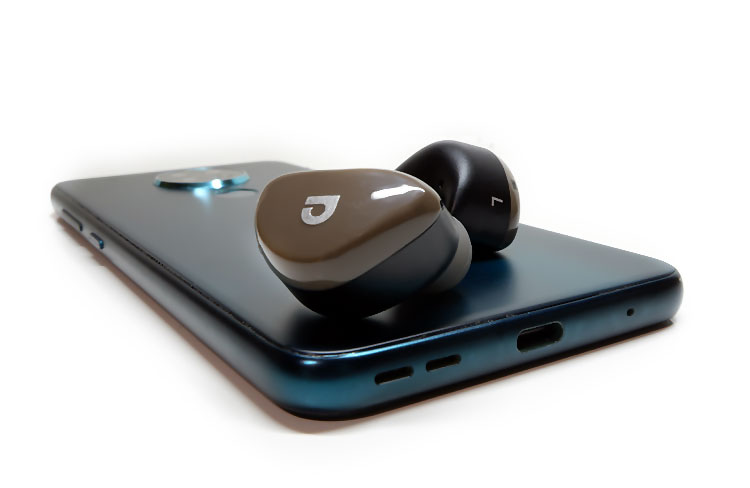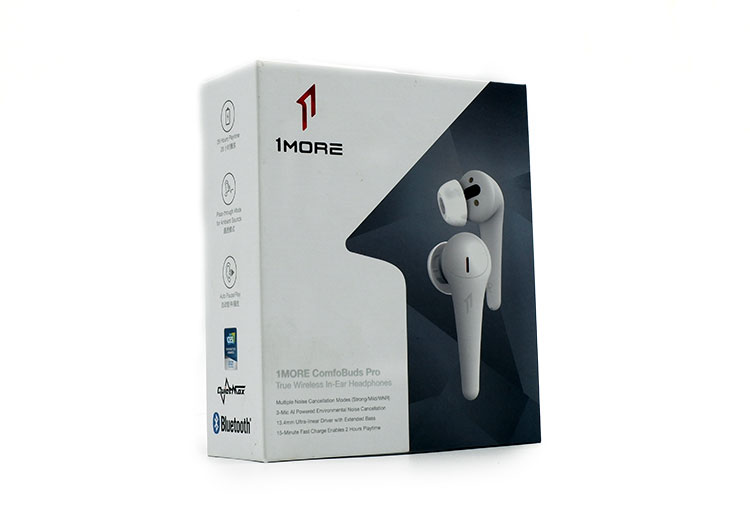Sound Impressions
For my sound impressions, I had the Comfobuds Pro in mild ANC mode, but the sound notes are equally valid for the strong ANC mode. The differences between the other modes will be discussed in the section below.
Bass
The bass on the Comfobuds Pro is controlled and deep. The midbass takes on a rounded and punchy character, giving drum hits the required body to sound natural. I would have wanted to hear a bit more texture in each drum beat though. The sustain in each bass note is also a touch too long, which makes drum hits sound a bit stretched out.
The additional sustain allows bass grooves to have more flow, this really helps make bass guitars a bit more enjoyable.
Although the bass on the Comfobuds Pro’s bass is impactful, the amount is kept on the more neutral side of things. This allows the bass to have a good tonal balance with the rest of the frequency response.
Midrange
The midrange is not particularly elevated, but it isn’t recessed, even compared to the impactful bass region. This shines the light on the articulate and textured vocal range on the Comfobuds Pro. However, the vocal range is just a touch dry and doesn’t have a particularly euphonic character.
Guitars on the other hand have a full-bodied presentation, with a slightly warmer timbral tilt. This allows guitars to have a good sense of presence, but it could use a bit more sparkle to highlight the more plucked quality of guitar picking.
Similarly, pianos also take on a full-bodied, but slightly warmer tilt. However, each keystroke on the piano could use a more immediate sense of attack to make it sound more natural.
Overall, the midrange is properly weighted compared to the frequency spectrum. Although there might be some dryness in the vocal range, the midrange is generally accurate which ensures that it isn’t easily lost in the mix.
Treble
The warmer tilt in midrange acoustic instruments is partly because of the slightly more subdued treble range.
While the treble is generally very detailed, it’s immediately apparent that the treble is slightly more pushed back once other instruments come in. Each note has a very airy and detailed character with trumpets, where the strength in each blow of the trumpet is strong and full.
This just shows that the treble extension is slightly rolled off at the extremes. While this means that treble is pushed back a bit, I understand that this tuning is meant for walking around the city, where there is a lot of lower frequency noise. So the slightly more subdued treble will allow it to have a more neutral tonal balance with the rest of the frequency response.
Soundstage & Imaging
Typically, when I listen to TWS earbuds with ANC on, the soundstage is the first thing that would suffer. What surprised me though is that the soundstage on the Comfobuds Pro is surprisingly wide given the circumstances.
Imaging is fairly limited though, where images are formed either dead center, or on the extremes. There isn’t much to be heard in between the extremes of these directions. Furthermore, when listening to the images, they are just found either very close, or very far.
Dynamic Range
When I listened to classical recordings that typically have a slightly wider dynamic range, I was quite impressed at how the Comfobuds Pro presented a wide dynamic range.
Where louder crescendos easily elicit an emotional response. When playing softer tones, the Comfobuds Pro presented softer piano keys with gentleness, but it could use a bit more refinement, as softer tones tend to become slightly fuzzier.
ANC Sound Modes
Turning off the ANC sound mode, the Comfobuds Pro’s bass is bloated and scattered quite a bit, and the midrange is consequently pushed back. This creates a muddier overall presentation.
With pass-through mode, on the other hand, the overall sound becomes a lot flatter. Where the bass is more subdued, and the midrange is equally flattened out. However, the magnified outside noises tend to make the music a bit fuzzy, so I believe this mode is more about being conscious about the environment, at the cost of sound quality.
WNR or wind resistance mode on the other hand is pretty much the same as the other 2 ANC modes except that the tonal balance is a touch warmer.
While I ended up doing most of my listening tests in mild ANC mode, I fully understand why 1MORE had to include the different sound modes in the Comfobuds Pro. These sound modes allow these TWS earbuds the flexibility to be used in different situations and environments, albeit with some compromises in sound quality.
Select Comparisons
Moondrop Sparks
Technical
With both Moondrop and 1MORE having a background in traditional IEM design, they ensured that the drivers inside the TWS earbuds are special. With Moondrop putting in a 6mm Beryllium coated dynamic driver into the Sparks, while 1MORE opted for a 13.2mm metal done dynamic driver.
While the roots of both companies are quite similar, the approach that they took to their IEMs is rather different. With Moondrop focusing on the chipset with the Sparks, it features a Qualcomm chipset that enables it to have AptX decoding capabilities, as opposed to the standard SBC on the Comfobuds Pro.
However, 1MORE focused more on the ANC aspect of things having a total of 5 sound modes, while the Sparks is limited to just passive noise isolation.
Interaction with both TWS earbuds is quite similar though, with playback control being done with double and triple taps. The functions of double and triple taps can be customized using their respective companion apps, so they’re equally customizable.
Single taps on both TWS earbuds are more limited, so the Sparks’ single tap turns on the Google assistant/Siri, while the Comfobuds Pro switches them into a preset sound mode.
Design
Physically, the Sparks features a much larger translucent case with 3 LED battery indicators. The Comfobuds Pro has a smaller oblong shape that is smooth as an egg with a single multi-color LED battery indicator. Personally, I find the Comfobud Pro’s charging case to be a bit more compact, and more practical for an on-the-go TWS earbuds solution.
On the specs sheet, both TWS earbuds can hold about the same amount of charge with the Sparks being rated at 6.5 hours, while the Comfobuds Pro is rated at 6 hours. In reality though, the Comfobuds a bit longer, so it’s comparable to the Sparks’ 6.5-hour battery life quote.
However, with the larger charging case, the Sparks easily lasts almost 2x longer since the charging case holds about 4 charges inside the carrying case, against the Comfobuds Pro’s 2 charges inside the carrying case.
Performance
With the stock tonality of the Sparks, it has a more emphasized mid-bass hump. The sub-bass on the other hand tends to be a bit more rolled off. This gives the bass a bit more presence in the Sparks, but the speed of the attack is equally present. The Comfobuds Pro tends to have a bit more sustain in the bass region though.
Going into the vocal range, the Sparks is comparatively a bit less forward. However, listening to the vocal range itself, the Sparks tend to have a slightly more euphonic vocal quality. The immediacy of attack of piano keystrokes is a bit more natural with the Sparks. Acoustic instrument timbre is a touch brighter on the Sparks, while neither TWS earbuds are particularly bright.
The treble range is a bit less rolled off on the Sparks, but both TWS earbuds have an equally crystalline treble presentation. There is a bit more air with the Sparks though.
With the extra air frequencies on the Sparks, one would assume that it has a wider soundstage. Surprisingly though, both TWS earbuds have an equally expansive soundstage presentation. While image placement within the soundstage tends to be a bit more detailed with the Sparks, the images tend to be a bit fuzzier.
The Comfobuds Pro ends up having a slightly wider dynamic range, however, the softer tones tend to be a bit more refined with the Sparks.
Audiofly AFT2
Technical
Internally, the AFT2 has neodymium magnets powering a 6mm dynamic driver, which is much smaller than the 13.2mm driver inside the Comfobuds Pro. Physically, the AFT2 has smaller earbuds, while the charging is a slide-out cylindrical canister. Both charging cases offer a USB C port.
While the AFT2 doesn’t feature any ANC features for listening to music, it still features a noise-canceling mic that cancels ambient noise while in-call. So the call quality and the voice quality of both TWS earbuds are comparable, and the person on the other end of the line didn’t notice much of a difference in the quality of my voice.
The interface of the AFT2 is fixed without the availability of customization through a companion app, but it has a more comprehensive list of available functions. Where the single tap is for play/pause, double-tap for next/previous track, and hold for volume up/down.
These features are in my opinion the more common functions that I tend to look for with most TWS earbuds, and they are easily accessible through a series of taps. The Comfobuds Pro on the other hand is more limited in the functions available, but the double and triple tap functionality can be customized through the 1MORE app.
The AFT2 features a more advanced Bluetooth codec with AptX built-in, while the Comfobuds Pro is limited to SBC. In real-life tests though, the SBC codec isn’t noticeably noisier than the AptX running on the AFT2. Latency and signal fidelity are about equal on both devices, with the AFT2 maintaining a tighter standard for latency.
Performance
Starting from the sub-bass the AFT2 tends to roll off a little bit earlier, while still having a similar amount of mid-bass presence. Drum hits tend to have a more immediate sense of attack while sounding a bit smaller and slightly more pulled back.
The midrange quantity is about equal, but there is a slightly more euphonic presentation with the AFT2. Vocal presence tends to be more pulled back though, while instruments sound a touch smaller with the AFT2. Instrument timbre is also comparatively a bit brighter, due to the slightly more present treble range. The treble range is notably more forward on the AFT2 while remaining crystalline.
The overall size of the soundstage tends to be a bit smaller on the AFT2, where it feels like there is an end to the soundstage. However, when it comes to the placement of images within the soundstage, the AFT2 tends to feel a bit more spaced out, while having a bit more depth. The vividness of the images tends to be a bit fuzzier when compared to the Comfobuds Pro though.
Dynamic range is something that the AFT2 tends to excel at, and it seems to play softer notes with more control and gentleness. The crescendos are equally engaging on both TWS earbuds though.
Our Verdict
The Comfobuds Pro is a product that is formed from the experience and expertise of a seasoned IEM manufacturer in 1MORE. Where the details of the design, and ergonomics show that much care has been taken to ensure that the Comfobuds Pro is a product without any rough edges.
With the Comfobuds Pro coming from a well-known IEM manufacturer such as 1MORE, I’m not surprised that their experience in design and tuning has seeped through their TWS earbuds.
With a generally enjoyable warmer tuning specifically customized for use with its different ANC modes, the Comfobuds Pro has enough speed to ensure that details in the music can easily be enjoyed.
1MORE Comfobuds Pro Specifications
- Single Earbud Battery Capacity: 50 mAh
- Case Battery Capacity: 450 mAh
- Earbuds Charging Time: 1 Hour
- Case Charging Time: 2 Hours
- Playtime* (ANC On)
- Earbud Fully Charged: 6Hours
- Case and Earbuds Fully Charged: 20 Hours
- Playtime (ANC Off)
- Earbud Fully Charged: 8 Hours
- Case and Earbuds Fully Charged: 28 Hours
- Speaker Impedance: 32 Ω
- Bluetooth Range: 10 m (Open Space)
- Bluetooth Version: Bluetooth® 5.0
- Bluetooth Protocols: HFP / A2DP / AVRCP
- Input: 5V 1A





